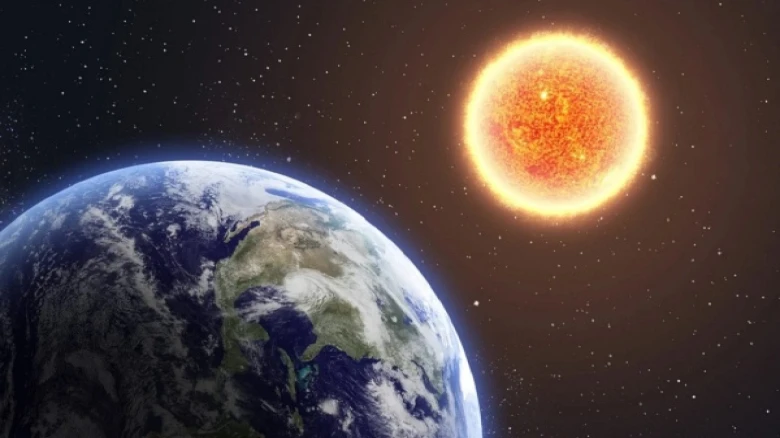National

The Sun erupted with powerful solar flares, propelling several CMEs towards Earth. The Cannibal eruption is set to occur today.
Digital Desk: Activity continues to increase on the Sun as it enters the height of its solar cycle. Multiple Coronal Mass Ejections (CMEs) from the star are travelling toward Earth, and the US-based Space Weather Prediction Center under the National Oceanic and Atmospheric Administration (NOAA) has forecast that a major eruption will reach the earth on Tuesday.
The Cannibal eruption could disrupt radio frequencies, cause severe auroras, and cause a G2 geomagnetic storm, according to researchers. A geomagnetic storm is a severe disturbance of the Earth's magnetosphere that happens when energy from the solar wind is exchanged very efficiently into the space environment surrounding Earth.
In contrast, a coronal mass ejection is a huge expulsion of plasma and magnetic field from the Sun's corona. They have the ability to spew billions of tonnes of coronal debris. CMEs fly outward from the Sun at rates ranging from less than 250 kilometres per second to about 3000 kilometres per second.
The Solar Dynamics Observatory, which has been watching developments on the star in our solar system, detected significant solar flares on Tuesday about 1:55 a.m. The flare was classified as an X1 flare; whereas X represents the most powerful type of flare, the number indicates its strength.
Power grids and navigation signals, as well as endangering spacecraft and astronauts. The Indian Institute of Science Education and Research (IISER) Kolkata's Center of Excellence in Space Sciences India also monitored the Sun's activity.
While the upcoming ejection is expected to interfere with radio communication on Earth, one of the Sun's largest sunspots has recently rotated across the northeastern limb. According to spaceweather.com, AR3112 features almost a dozen black cores spread across 130,000 km of the solar surface. According to astronomers, the sunspot is unstable and might cause two weeks of strong solar activity.
Leave A Comment